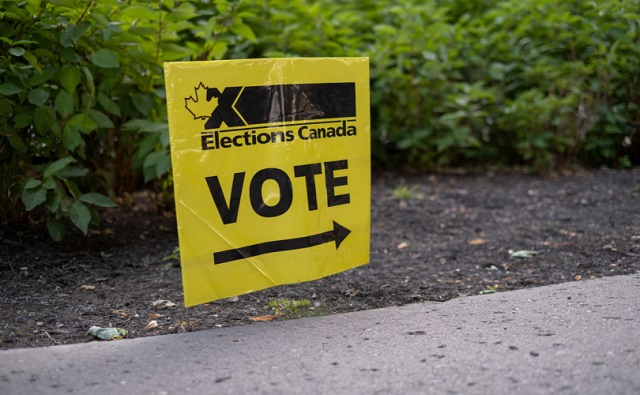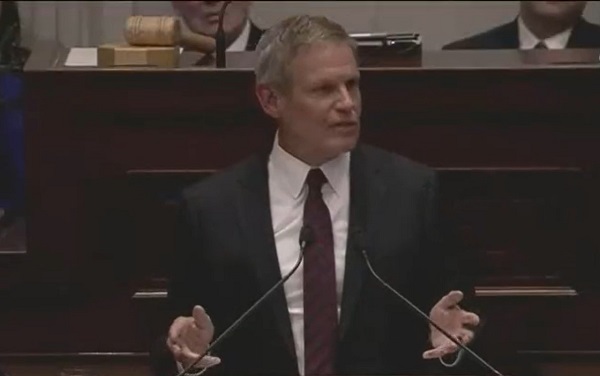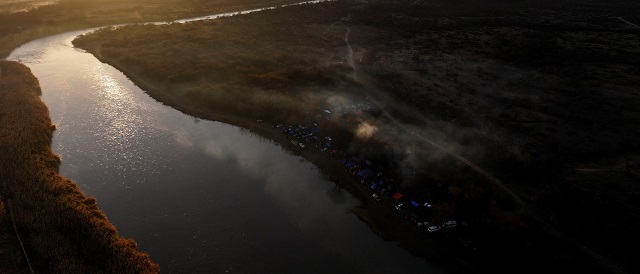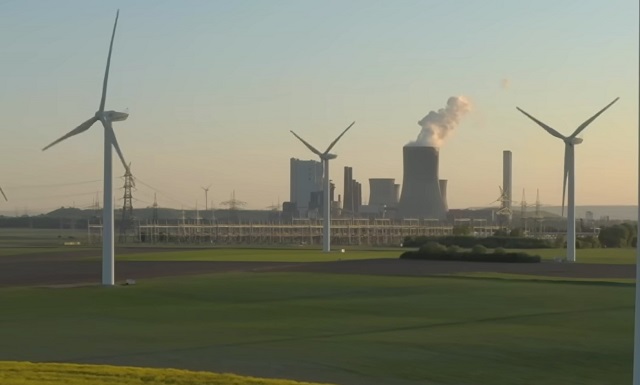Economy
New poll shows Conservatives would win massive House majority to overtake Trudeau’s Liberals

From LifeSiteNews
A Nanos Research poll has conservatives winning 205 seats in the House of Commons, a gain of 91, and the Liberals winning only 53 seats, a loss of 107.
A recent poll shows that were a Canadian federal election held today the Conservative Party of Canada (CPC) under leader Pierre Poilievre would win a majority in the House of Commons over Prime Minister Justin Trudeau’s Liberals, whose popularity has taken nosedive.
A Nanos Research poll released November 10 shows that conservatives would win 205 seats, a gain of 91s, and the Liberals would win only 53 seats, a loss of 107.
In a close third, the socialist New Democratic Party (NDP) under leader Jagmeet Singh would win 39 seats, a gain of 14.
When it comes to the overall vote, the CPC’s support stands at 40 percent, with the Liberals showing about half that at 22 percent support, which is only two points ahead of the NDP, which has 20 percent support.
The separatist Bloc Quebecois Party is tied with the Greens at 7 percent support, with Maxime Bernier’s People’s Party of Canada showing only 2 percent support.
Interestingly, the Nanos poll indicates that the Trudeau Liberals are now less popular than the Green Party in Atlantic Canada, an area where they have had traditionally large support.
As it stands, the Liberals have 158 seats to the Conservatives’ 117, with the Bloc having 35 and the NDP 25. There are three independent MPs and two Green MPs. One seat is vacant. A party needs at least 170 seats to form a majority government.
The NDP has an informal coalition with Trudeau that began last year, agreeing to support and keep the Liberals in power until the next election is mandated by law in 2025.
‘Election’ soon ‘likely’ observes pollster
Polling Canada, a site that shares modeled data from a variety of sources, said the latest numbers show an election is likely to come soon.
“You say no election until 2025, but we’re gonna get it in 2024 and you best believe it will be nothing but chaos,” it posted on X (formerly Twitter) yesterday.
Polling Canada noted how the Trudeau Liberals’ freefall in popularity is on par with 2011, which saw that party win only 77 seats to the Conservatives’ 143.
“Would you believe me if I told you the Liberals in the latest Nanos poll are only 3 points off from their worst electoral performance ever (2011),” wrote Polling Canada on X (formerly Twitter) yesterday.
Reaction to the polling numbers came swiftly from those who both oppose Trudeau and people who still support him.
“The Trudeau Liberals are being absolutely smashed in the polls and may soon fall behind the federal NDP. This epic Liberal implosion is totally deserved for the horrendous things they have done to Canadians,” political commentator Paul Mitchell wrote on X (formerly Twitter) in response to the polling data.
An X user named Wolf noted just how bad the recent polling data is for the Trudeau Liberals.
“The best part about this is that it’s Nanos, the most Liberal friendly pollster of the bunch. This has to sting,” Wolf posted.
Another user questioned whether 40 percent support is enough for the Conservatives to win.
“Need more than 40 these days… I have no doubt libs and ndp would form a coalition if this played out today,” X user Heckled wrote.
Trudeau’s popularity has been in freefall and his government has been embroiled in scandal after scandal, the latest being a controversy around a three-year carbon tax “pause” he announced on home heating oil but only in Atlantic Canadian province.
Even top Liberal party stalwarts have called for him to resign.
Senator Percy Downe, who served as former Liberal Prime Minister Jean Chrétien’s chief of staff from 2001 to 2003, recently said that the “prudent course of action” is for another “Liberal Leader to rise from the impressive Liberal caucus and safeguard those policies [Trudeau] was actually able to accomplish.”
When Trudeau was asked about Downe’s comments, however, he brushed off the idea of stepping down by saying “Oh well.”
Trudeau has also drawn the ire of many of Canada’s premiers, five of whom late last week banded together to demand he drop the carbon tax on home heating bills for all provinces, saying his policy of giving one region a tax break over another has caused “divisions.”
LifeSiteNews reported last month how Trudeau’s carbon tax is costing Canadians hundreds of dollars annually, as the rebates given out by the government are not enough to compensate for the increased fuel costs.
Economy
‘Gambling With The Grid’: New Data Highlights Achilles’ Heel Of One Of Biden’s Favorite Green Power Sources

 From the Daily Caller News Foundation
From the Daily Caller News Foundation
By NICK POPE
New government data shows that wind power generation fell in 2023 despite the addition of new capacity, a fact that energy sector experts told the Daily Caller News Foundation demonstrates its inherent flaw.
Wind generation fell by about 2.1% in 2023 relative to 2022 generation, despite the 6 gigawatts (GW) of wind power capacity that came online last year, according to data published Tuesday by the U.S. Energy Information Administration (EIA). That wind power output dropped despite new capacity coming online and the availability of government subsidies highlights its intermittency and the problems wind power could pose for grid reliability, energy sector experts told the DCNF.
The decrease in wind generation is the first drop on record with the EIA since the 1990s; the drop was not evenly distributed across all regions of the U.S., and slower wind speeds last year also contributed to the decline, according to EIA. The Biden administration wants to have the American power sector reach carbon neutrality by 2035, a goal that will require a significant shift away from natural gas- and coal-fired power toward wind, solar and other green sources.

A table depicting the decrease of wind power generation in 2023 relative to 2022. (Screenshot via U.S. Energy Information Administration)
“Relying on wind power to meet your peak electricity demands is gambling with the grid,” Isaac Orr, a policy fellow at the Center of the American Experiment who specializes in power grid-related analysis, told the DCNF. “Will the wind blow, or won’t it? This should be a moment where policymakers step back and consider the wisdom of heavily subsidizing intermittent generators and punishing reliable coal and gas plants with onerous regulations.”
Between 2016 and 2022, the wind industry received an estimated $18.6 billion worth of subsidies, about 10% of the total amount of subsidies extended to the energy sector by the U.S. government, according to an August 2023 EIA report. Wind power received more assistance from the government than nuclear power, coal or natural gas over the same period of time.
“This isn’t subsidies per kilowatt hour of generation. It’s raw subsidies. If it were per kilowatt hour of generation, the numbers would be even more extreme,” Paige Lambermont, a research fellow at the Competitive Enterprise Institute, told the DCNF. “This is a massive amount of money. It’s enough to dramatically alter energy investment decisions for the worse. We’re much more heavily subsidizing the sources that don’t provide a significant portion of our electricity than those that do.”
“Policy that just focuses on installed capacity, rather than the reliability of that capacity, fails to understand the real needs of the electrical grid,” Lambermont added. “This recent disparity illustra
Wind power’s performance was especially lackluster in the upper midwest, but Texas saw more wind generation in 2023 than it did in 2022, according to EIA. Wind generation in the first half of 2023 was about 14% lower than it was through the first six months of 2022, but generation was higher toward the end of 2023 than it was during the same period in 2022.
In 2023, about 60% of all electricity generated in the U.S. came from fossil fuels, while 10% came from wind power, according to EIA data. Beyond generous subsidies for preferred green energy sources, the Biden administration has also aggressively regulated fossil fuels and American power plants to advance its broad climate agenda.
Biden’s Climate Bill Boosted An Offshore Wind Giant, But His Economy Brought It To The Brink https://t.co/AF7SPT2FNu
— Daily Caller (@DailyCaller) November 3, 2023
The Environmental Protection Agency’s (EPA) landmark power plant rules finalized this month will threaten grid reliability if enacted, partially because the regulations are likely to incentivize operators to close plants rather than adopt the costly measures required for compliance, grid experts previously told the DCNF. At the same time that the Biden administration is effectively trying to shift power generation away from fossil fuels, it is also pursuing goals — such as substantially boosting electric vehicle adoption over the next decade and incentivizing construction of energy-intensive computer chip factories — that are driving up projected electricity demand in the future.
“The EIA data proves what we’ve always known about wind power: It is intermittent, unpredictable and unreliable,” David Blackmon, a 40-year veteran of the oil and gas industry who now writes and consults on the energy sector, told the DCNF. “Any power generation source whose output is wholly dependent on equally unpredictable weather conditions should never be presented by power companies and grid managers as safe replacements for abundant, cheap, dispatchable generation fueled with natural gas, coal or nuclear. This is a simple reality that people in charge of our power grids too often forget. Saying that no doubt hurts some people’s feelings, but nature really does not care about our feelings.”
Blackmon also pointed out that, aside from its intermittency, sluggish build-out of the transmission lines and related infrastructure poses a major problem for wind power.
“Wind power is worthless without accompanying transmission, yet the Biden administration continues to pour billions into unreliable wind while ignoring the growing crisis in the transmission sector,” Blackmon told the DCNF.
Another long-term issue that wind power, as well as solar power, faces is the need for a massive expansion in the amount of battery storage available to store and dispatch energy from intermittent sources as market conditions dictate. By some estimates, the U.S. will need about 85 times as much battery storage by 2050 relative to November 2023 in order to fully decarbonize the power grid, according to Alsym Energy, a battery company.
The White House and the Department of Energy did not respond to requests for comment.
Alberta
Alberta government should eliminate corporate welfare to generate benefits for Albertans

From the Fraser Institute
By Spencer Gudewill and Tegan Hill
Last November, Premier Danielle Smith announced that her government will give up to $1.8 billion in subsidies to Dow Chemicals, which plans to expand a petrochemical project northeast of Edmonton. In other words, $1.8 billion in corporate welfare.
And this is just one example of corporate welfare paid for by Albertans.
According to a recent study published by the Fraser Institute, from 2007 to 2021, the latest year of available data, the Alberta government spent $31.0 billion (inflation-adjusted) on subsidies (a.k.a. corporate welfare) to select firms and businesses, purportedly to help Albertans. And this number excludes other forms of government handouts such as loan guarantees, direct investment and regulatory or tax privileges for particular firms and industries. So the total cost of corporate welfare in Alberta is likely much higher.
Why should Albertans care?
First off, there’s little evidence that corporate welfare generates widespread economic growth or jobs. In fact, evidence suggests the contrary—that subsidies result in a net loss to the economy by shifting resources to less productive sectors or locations (what economists call the “substitution effect”) and/or by keeping businesses alive that are otherwise economically unviable (i.e. “zombie companies”). This misallocation of resources leads to a less efficient, less productive and less prosperous Alberta.
And there are other costs to corporate welfare.
For example, between 2007 and 2019 (the latest year of pre-COVID data), every year on average the Alberta government spent 35 cents (out of every dollar of business income tax revenue it collected) on corporate welfare. Given that workers bear the burden of more than half of any business income tax indirectly through lower wages, if the government reduced business income taxes rather than spend money on corporate welfare, workers could benefit.
Moreover, Premier Smith failed in last month’s provincial budget to provide promised personal income tax relief and create a lower tax bracket for incomes below $60,000 to provide $760 in annual savings for Albertans (on average). But in 2019, after adjusting for inflation, the Alberta government spent $2.4 billion on corporate welfare—equivalent to $1,034 per tax filer. Clearly, instead of subsidizing select businesses, the Smith government could have kept its promise to lower personal income taxes.
Finally, there’s the Heritage Fund, which the Alberta government created almost 50 years ago to save a share of the province’s resource wealth for the future.
In her 2024 budget, Premier Smith earmarked $2.0 billion for the Heritage Fund this fiscal year—almost the exact amount spent on corporate welfare each year (on average) between 2007 and 2019. Put another way, the Alberta government could save twice as much in the Heritage Fund in 2024/25 if it ended corporate welfare, which would help Premier Smith keep her promise to build up the Heritage Fund to between $250 billion and $400 billion by 2050.
By eliminating corporate welfare, the Smith government can create fiscal room to reduce personal and business income taxes, or save more in the Heritage Fund. Any of these options will benefit Albertans far more than wasteful billion-dollar subsidies to favoured firms.
Authors:
-

 Economy2 days ago
Economy2 days ago‘Gambling With The Grid’: New Data Highlights Achilles’ Heel Of One Of Biden’s Favorite Green Power Sources
-

 illegal immigration2 days ago
illegal immigration2 days agoBiden’s DOJ Threatens To Sue Another State For Enforcing Immigration Law
-

 ESG2 days ago
ESG2 days agoTennessee Taking Lead In Protecting Civil Rights And Free Enterprise—And Stopping Political Debanking
-

 illegal immigration2 days ago
illegal immigration2 days agoMore Chinese Illegal Migrants Apprehended At Southern Border In Two Days Than In All Of 2021: REPORT
-

 Energy1 day ago
Energy1 day agoMarket Realities Are Throwing Wrench In Biden’s Green Energy Dreams
-

 conflict19 hours ago
conflict19 hours agoOver 200 Days Into War, Family Of American Hostage in Gaza Strives For Deal To Bring Son Home
-

 Brownstone Institute15 hours ago
Brownstone Institute15 hours agoBook Burning Goes Digital
-

 Brownstone Institute3 hours ago
Brownstone Institute3 hours agoThe Predictable Wastes of Covid Relief









